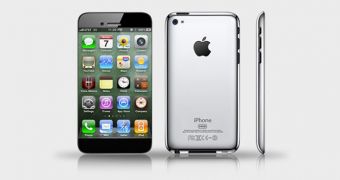A larger screen isn’t likely to pose any problems to developers currently making a buck in Apple’s App Store, or so say the people at Localmind, a social discovery service for both iOS and Android.
Interviewed on the possibility of having to develop for a 4-inch display, Lenny Rachitsky, the CEO of Localmind, said he doesn’t see Apple shooting itself in the foot by releasing a new iPhone with a bigger screen that poses development problems.
Fragmentation is not Apple’s thing, as he put it. In fact, Rachitsky downright admits they don’t even discuss this much, as it’s not something to be afraid of.
“We haven’t put a lot of thought into it yet, partly because we assume Apple isn’t going to pull an Android and fragment the device market unnecessarily,” he said.
“If they do, they must have a really good reason to do it, and we’re confident they’ll provide tools to make it easy to migrate. The last thing they want to do is put more friction in front of developers.”
Localmind’s Lead iOS Developer, Nelson Gauthier, was also quoted on this particular aspect. He too was confident that Apple would facilitate any type of transition, no matter how small or big.
“Apple often changes the requirements for iOS applications but they usually give developers fair warning and decent tools to accommodate new devices. The transition to Retina display and iPad were both relatively straightforward,” he said.
In a subsequent email, he told Gigaom that a bigger display “could mean that the display has a higher resolution while retaining the same aspect ratio.”
He sounded convinced that Apple would do everything in its power to “help developers transition between form factors by providing a system that would automatically adjust layouts for new resolutions and display aspects.”
And he also had an example to offer: the Cocoa Auto-Layout, a Mac OS X component “that allows developers to define layouts using fairly simple, freeform constraints.”
“A system like this could also work on iOS,” he said.

 14 DAY TRIAL //
14 DAY TRIAL //